Why the American Sable Rabbit Is Rare and Unique
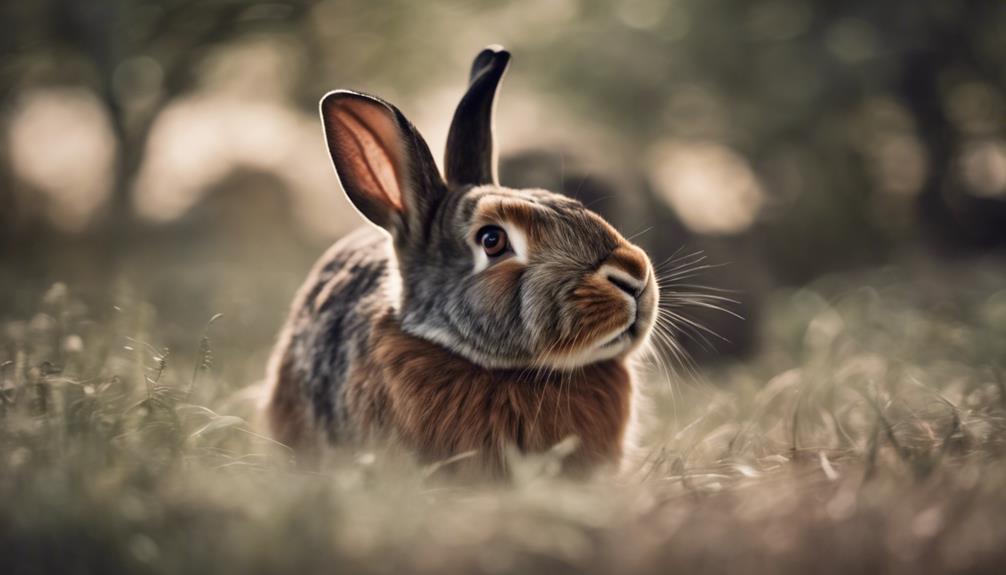
The American Sable Rabbit is rare and unique due to its fascinating blend of history.
It has genetic distinctiveness and a sepia brown coat from Chinchilla rabbit lineage.
Historical Origins of American Sable Rabbit
How did the American Sable Rabbit come to be recognized as a distinct breed within the rabbit community?
The American Sable Rabbit, with its historical origins traced back to Otto Brock's breeding efforts in California in 1924, has a unique history. This breed's distinctive coloring, reminiscent of Chinchilla rabbits, was achieved through intentional crossbreeding.
The American Sable Rabbit's journey to acceptance by the American Rabbit Breeders Association (ARBA) in 1931 marked a significant milestone in its development as an officially recognized breed.
Despite facing near-extinction in 1981, the breed was saved from disappearing by the dedicated efforts of Al Roerdanz from Ohio.
Highly valued for its rapid growth and quality meat in the commercial rabbit trade, the American Sable Rabbit stands out as a rare and sought-after breed with a fascinating background that sets it apart from its counterparts in the rabbit world.
Distinctive Coat Color of American Sable
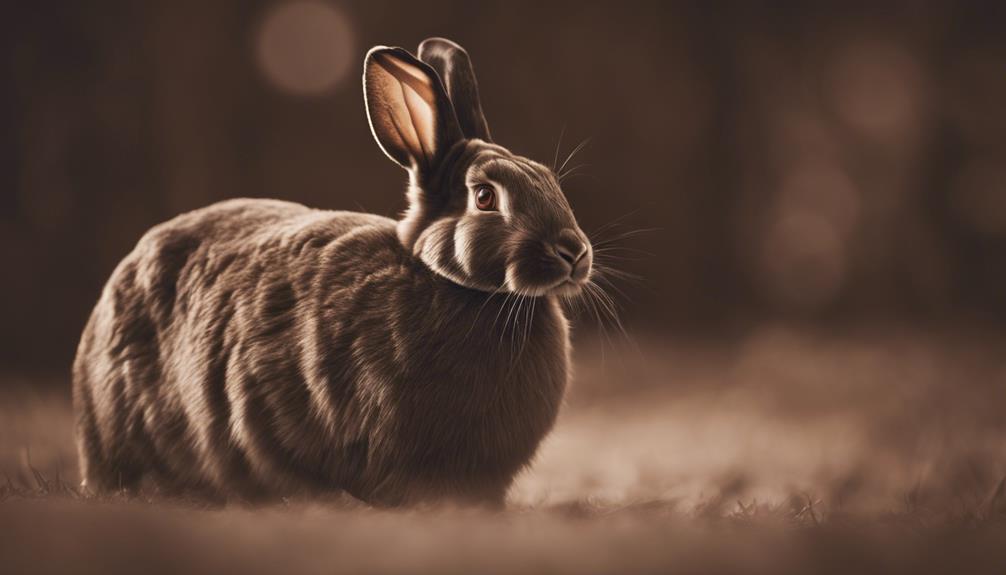
The distinctive coat color of the American Sable Rabbit, characterized by a sepia brown hue accented with darker shading on specific body areas, sets this breed apart from its counterparts in the rabbit community. This unique appearance is reminiscent of Siamese cats, with dark sepia hues prominently displayed on the head, feet, ears, back, and top of the tail.
The coat transitions to a lighter tan color over the body, creating a striking appearance that catches the eye. Complementing this sepia brown coat, American Sable Rabbits typically have dark eyes with a deep ruby hue, adding to their overall charm. The contrast between the darker and lighter shades in their coat gives these rabbits a sophisticated and elegant look that's distinct within the rabbit world.
The combination of the sepia brown base with the darker shading and the transition to lighter tones results in a visually captivating coat that contributes to the allure of the American Sable Rabbit.
Unique Health Traits of American Sable
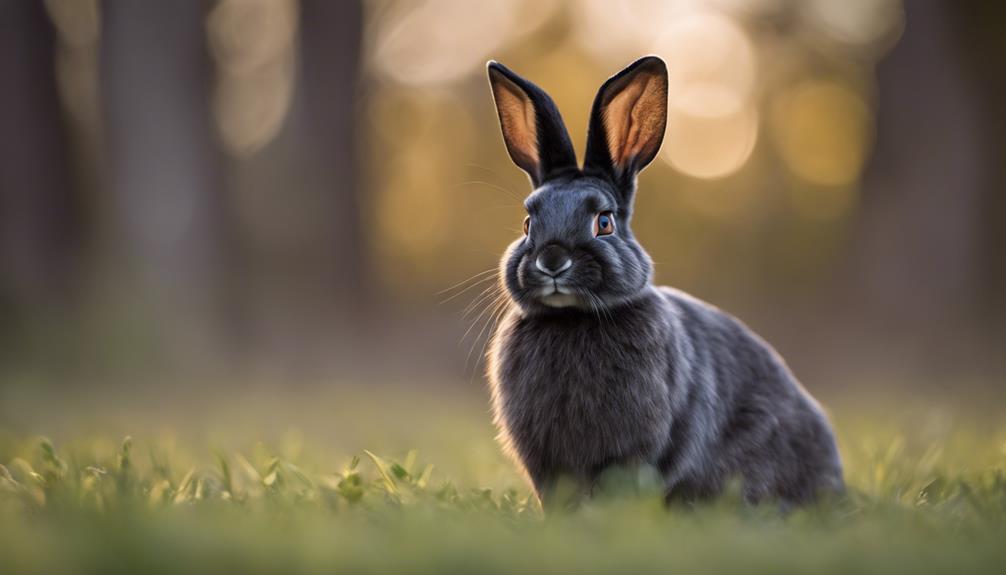
American Sable Rabbits exhibit unique health benefits due to their lack of specific breed-related health problems. However, they may still be genetically predisposed to common rabbit ailments such as malocclusion and gastrointestinal stasis.
Regular veterinary care and attention to dental health are crucial in maintaining the well-being of American Sable Rabbits.
Health Benefits
Uniquely devoid of breed-specific health issues, American Sable Rabbits stand out for their exceptional health traits. While they can face common rabbit health concerns like malocclusion and GI stasis, regular vet checkups are crucial for early detection and management.
Dental care plays a significant role in preventing malocclusion, a distinctive aspect of the American Sable breed's health needs. Additionally, the risk of back issues emphasizes the importance of proper handling and care. By providing a balanced diet, regular exercise, and meticulous grooming, owners can ensure the well-being of American Sable Rabbits, highlighting their unique health benefits.
These practices contribute to the overall health and vitality of these rare and remarkable rabbits.
Genetic Predispositions
With their sepia brown coat color and distinct dark eyes featuring deep ruby red coloring, American Sable Rabbits exhibit unique genetic predispositions that set them apart within the rabbit community. These genetic predispositions include:
- The breed's sepia brown coat color is a result of specific genetic traits that distinguish them from other rabbit breeds.
- Their dark eyes with deep ruby red coloring are a unique feature attributed to their genetic makeup.
- American Sable Rabbits don't have any significant health issues linked to their genetics, indicating robust health.
- Breeders meticulously preserve and maintain the genetic traits of American Sable Rabbits to uphold the breed's rarity and uniqueness in the rabbit world.
Rarity in American Sable Rabbit Breeding
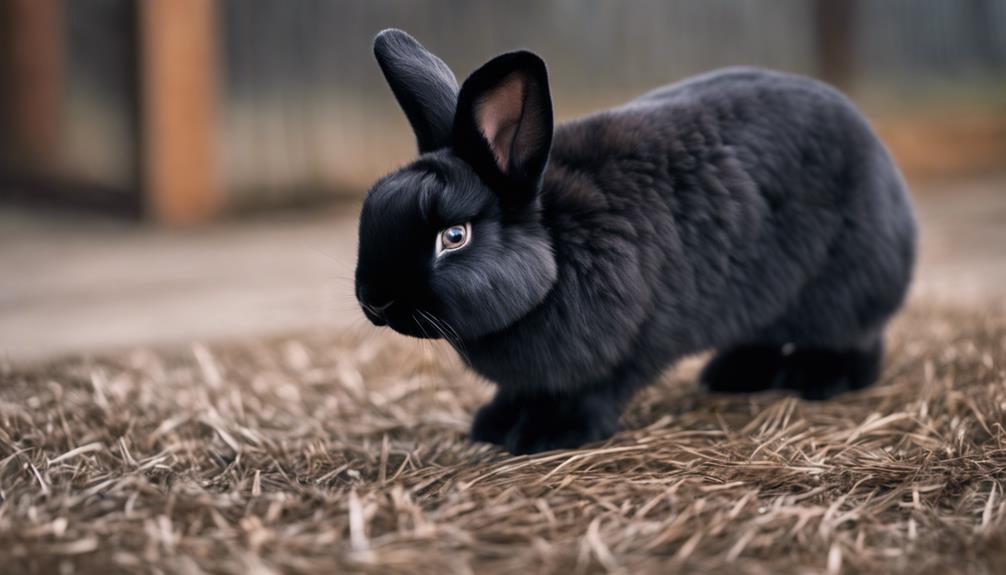
Considered a rarity in the realm of rabbit breeding, the American Sable Rabbit stands out for its distinctive sepia brown coloration and unique appearance. This breed's rarity stems not only from its striking features but also from a significant decline in population during the 1970s, which raised concerns about its conservation status.
At one point, the American Sable Rabbit faced the looming threat of extinction in 1981; however, dedicated breeders successfully revived the breed. Even today, American Sable Rabbits remain less common compared to other rabbit breeds, further adding to their status as a rare and sought-after breed among enthusiasts.
The historical significance and special characteristics of the American Sable Rabbit continue to contribute to its allure, making it a valuable addition to the world of rabbit breeding. The efforts to conserve and promote this rare breed highlight the importance of preserving genetic diversity within domestic rabbit populations.
Temperament and Behavior of American Sable
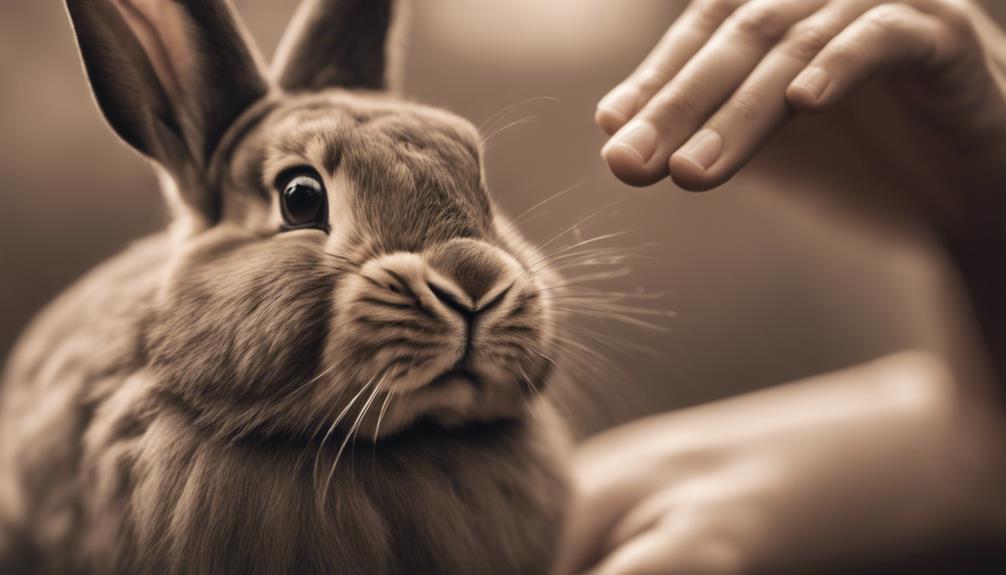
American Sable rabbits exhibit a delightful blend of friendliness and energy, making them ideal companions for those seeking interactive pets. Their preference for human interaction and playful nature make them a joy to have around, especially during the active periods of sunrise and sunset.
Unique behaviors like grunting when distressed or thumping their foot contribute to the charm and individuality of American Sables.
Sable Rabbit's Personality Traits
Known for their friendly and energetic demeanor, the American Sable Rabbits exhibit a temperament that's both affectionate and lively.
- They enjoy human companionship and form strong bonds with their owners.
- American Sables thrive on mental stimulation provided by toys.
- These rabbits appreciate gentle petting on their backs and between their ears.
- Litter training is possible for American Sables, although multiple litter boxes may be necessary for efficiency.
Behavioral Characteristics of Sables
With a penchant for interactive play and a strong preference for human companionship, the behavioral characteristics of Sable rabbits showcase a delightful blend of sociability and activity. American Sable rabbits, known for their friendly nature, are particularly active at sunrise and sunset, displaying a playful and energetic temperament. These social beings are affectionate and easily handled, forming strong bonds with their owners. Their docile nature makes them great companions, as they typically get along well with other rabbits. Below is a table summarizing the behavioral characteristics of the American Sable rabbit breed:
| Behavioral Characteristics | Description |
|---|---|
| Friendly Nature | Affectionate and sociable rabbits |
| Active at Sunrise | Energetic and playful during early hours |
| Form Strong Bonds | Seek out human companionship and affection |
American Sable Rabbit in Conservation Efforts
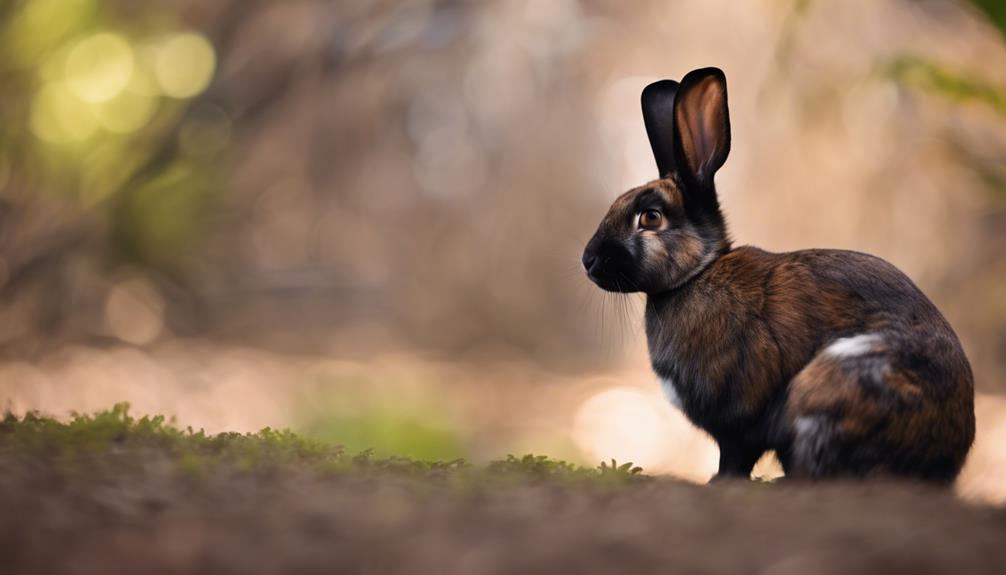
In conservation efforts for the American Sable Rabbit, significant strides have been made since its population decline in the 1970s. The formation of the American Sable Rabbit Society (ASRS) in 1982 played a crucial role in the preservation of this unique and rare breed. The ASRS continues to actively promote and protect the American Sable Rabbit, leading to a notable increase in its population. As of 2019, there are over a thousand American Sable Rabbits in the US, indicating the success of the conservation efforts. The breed is no longer a conservation concern, thanks to the dedication and initiatives undertaken by the ASRS and other organizations. The collaborative efforts in preserving the American Sable Rabbit have ensured its existence and sustainability, reflecting a positive outcome in the realm of rabbit conservation.
- Formation of the American Sable Rabbit Society (ASRS).
- Active promotion and protection of the breed by the ASRS.
- Increase in the population of American Sable Rabbits.
- Successful conservation efforts leading to the breed no longer being a concern.
Notable Features of American Sable Rabbit
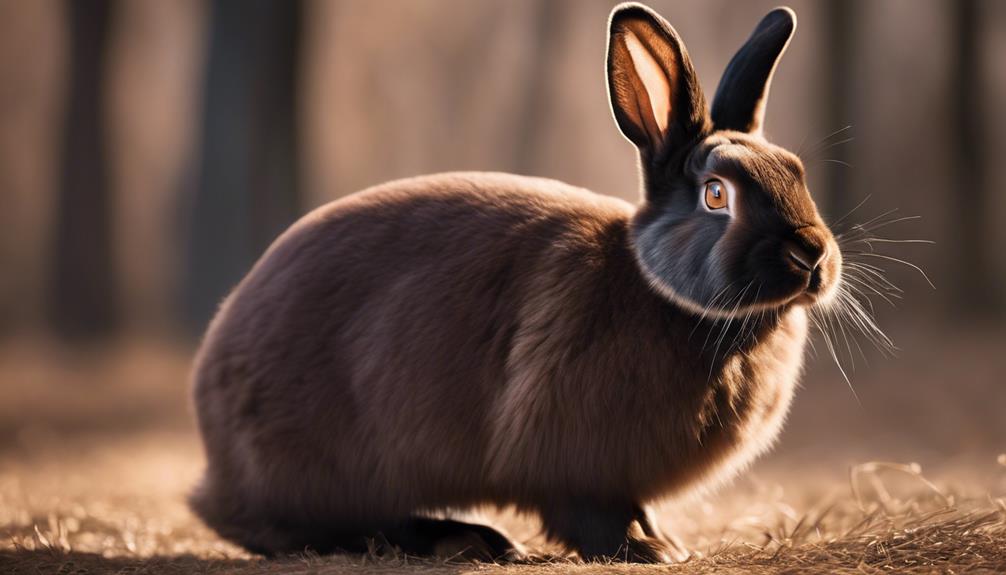
Characterized by its distinctive sepia brown coloring and dark ruby red eyes, the American Sable Rabbit stands out as a breed known for its unique features in both appearance and history. Developed in 1924 by Otto Brock in California, this breed showcases a medium size and a commercial body type, making it a standout in the rabbit world.
The American Sable Rabbit's coat color is a key feature, with the sepia brown shade having darker tones on specific parts, adding depth and richness to its appearance. The dark eyes of this rabbit, with their deep ruby red hue, contribute to its overall striking look.
Despite facing near-extinction in 1981, the successful revival of the American Sable Rabbit has solidified its status as a rare breed. Beyond its physical traits, this rabbit is also known for its friendly temperament, making it a prized addition to any rabbit enthusiast's collection.
Frequently Asked Questions
What Is the Rarest Type of Rabbit?
The American Sable Rabbit is the rarest type due to its unique sepia brown coat color, specific breeding requirements, and limited availability. Enthusiasts and breeders seek this breed for its distinctiveness in the rabbit world.
What Is the Use of American Sable Rabbit?
The American Sable Rabbit is utilized for fur production, show competitions, pet therapy, conservation efforts, breeding programs, and crossbreeding potential. Their genetic diversity, historical significance, color variations, and gentle temperament traits make them versatile and valuable.
How Rare Are American Rabbits?
American rabbits are rare due to breeding challenges, genetic diversity, and population decline. Conservation efforts and breeding programs focus on their historical significance. Market demand and crossbreeding risks impact their rarity, requiring wildlife protection.
What Does Sable Mean in Rabbits?
Sable in rabbits refers to a coat color pattern featuring sepia brown shading due to specific genetic inheritance. This unique fur coloration, known for darker shades on the back, feet, face, ears, and tail, sets the American Sable Rabbit apart from other breeds.









